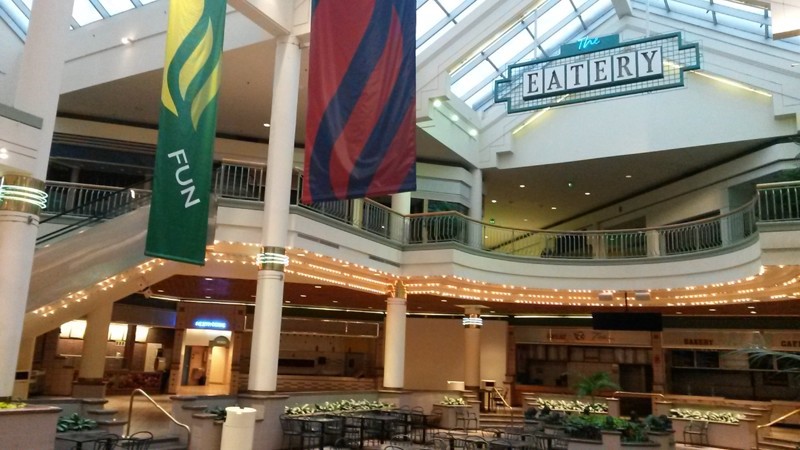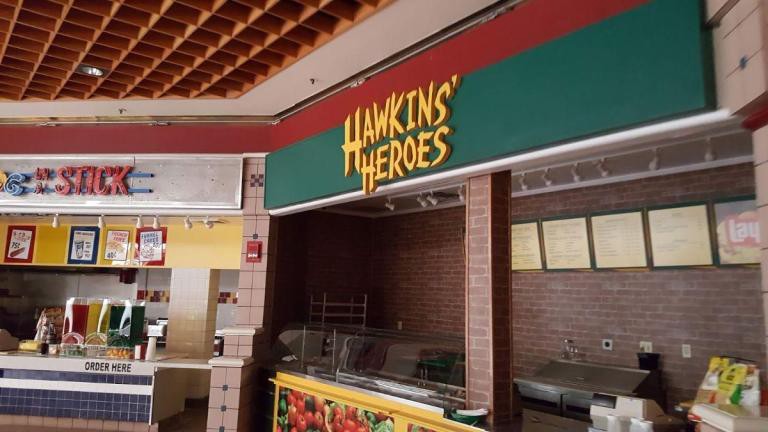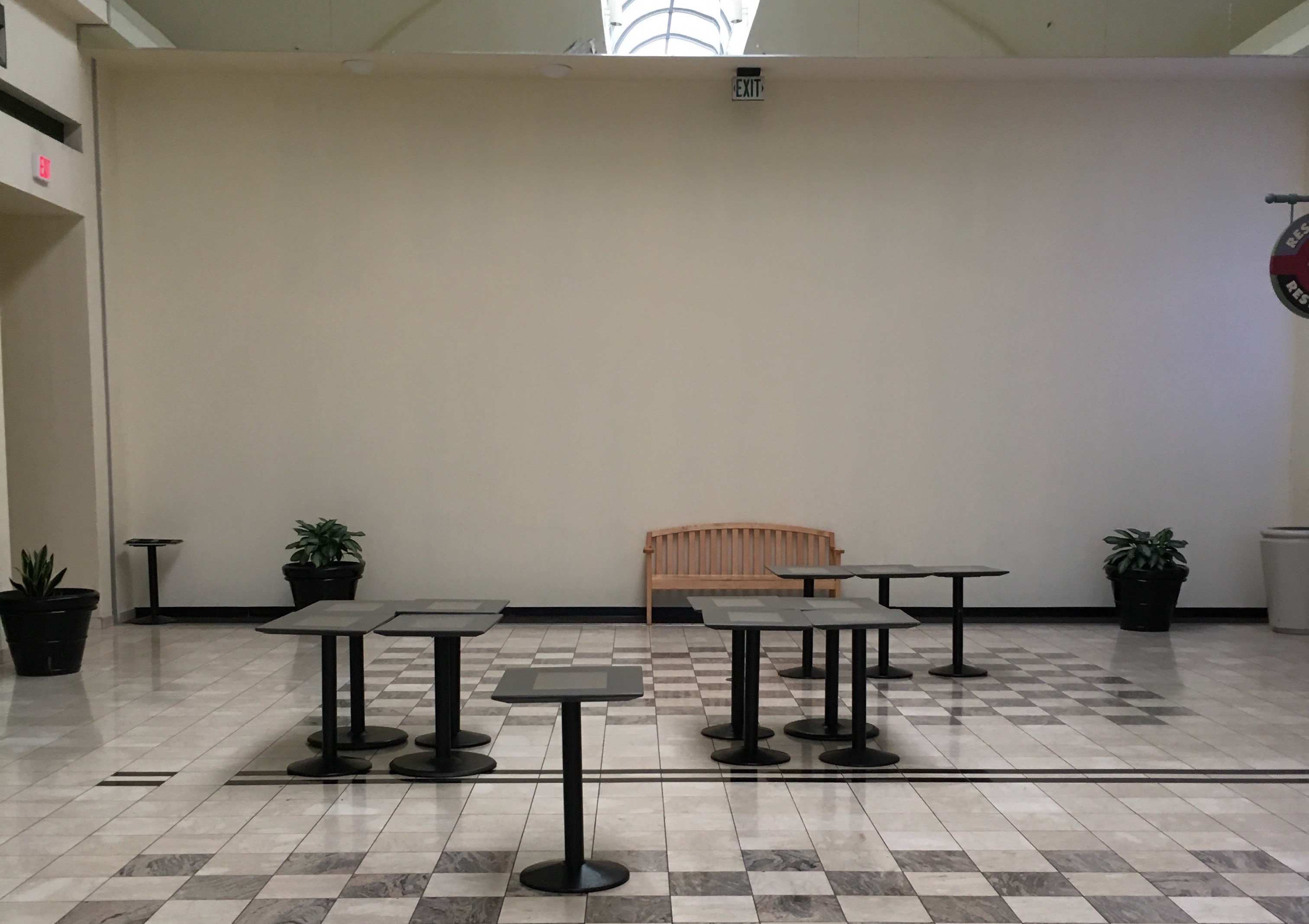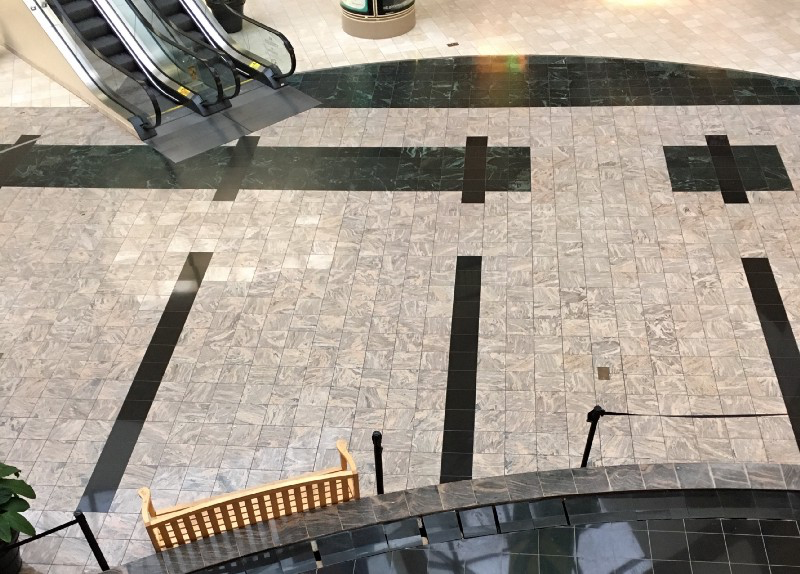Why malls like Gwinnett Place, the backdrop for Stranger Things season 3, likely can?t come back from their ugly history.
 Photo by The Atlanta Journal-Constitution
Photo by The Atlanta Journal-Constitution
There?s a scene towards the end of Stranger Things 3 in which a newspaper headline dismisses the season?s climactic Mind Flayer battle in the food court as ?the Starcourt Mall fire?, presumably attributing it to a gas explosion.
What some may not know is that Gwinnett Place Mall, a shopping centre on the outskirts of Atlanta that was repurposed as Starcourt, is home to a tragedy of its own. A grisly incident that occurred, coincidentally, in the food court.
In late 2017, the body of a Georgia State University student named Silling Man was found in the backroom of an abandoned Subway. By the time Man?s body was discovered, around 2 weeks after her death, it was badly decomposed.
How did a decaying corpse go undetected for so long? With swathes of vacant storefronts and a food court that?s long been empty, this 1.25 million square foot shopping centre is a ghost mall.
Simply put, there was no-one there to find her.
From Subway to Hawkins Heroes
The murder remained unsolved for a significant amount of time until Man?s boyfriend, Emmett Davis Jr., was arrested in June 2018. Davis was indicted on malice murder, felony murder, aggravated assault, aggravated battery, theft by taking and theft by deception charges in September of that year.
Although Man?s murder wasn?t swept under the rug per se, it took place just 5 months before filming for Stranger Things season 3 began. Davis had been in Gwinnett County jail for a matter of weeks when the show aired on Netflix.
The extent to which cast and crew knew about the murder is unclear, though there?s little doubt that the show?s location scouting and management teams must have been aware of it.
 Picture by PopGeeks
Picture by PopGeeks
Presumably this is why Hawkins Heroes, a fictional food court outlet that retains much of Subway?s branding, exists in the background of so many scenes of the show alongside real brands like Burger King and Taco Bell; it made sense to swap out Subway for Hawkins Heroes when the latter?s real life analogue was a murder scene just months before filming began.
At the time of writing, the case seems to have gone completely quiet.
Nothing has been written about Silling Man or Davis?s case since 2018, despite the fact that Man?s uncle told an 11Alive reporter that her family believe there?s no way Davis acted alone.
He also said that he has given up hope that her case will ever be solved.
The battle of Starcourt Mall
After season 3 of Stranger Things was done, there were whispers that ?the Starcourt wing? of Gwinnett Place Mall might remain intact.
The use of real brands in the series, both active and defunct, like (The) Gap and Waldenbooks mean that this was probably always a pipe dream. Still, it was an intriguing possibility for a mall that badly needed revitalisation.
But in 2019, once filming had wrapped, the set was quietly dismantled and disposed of. A few broken chairs and other props, quietly squirrelled away by savvy construction workers perhaps, made their way on to eBay.
Now all that?s left of Starcourt is a couple of mall directories still to be debranded and an opening hours decal that hasn?t been scraped off yet.
 Photo by Author
Photo by Author
It would be easy to write this off as a missed opportunity by Moonbeam Capital Investments, the mall?s owner and management company. One that doesn?t, by the way, necessarily have the best reputation in the space.
Finn Wolfhard, who plays Mike in the series, describes how Gwinnett Place ?was a little haunted. Every time we?d be in there it?d be fun, and then we?d just look at each other like ?there?s something wrong with this mall.??
Wolfhard isn?t lying. I visited the mall on October 31st 2018, and to say that it was unnerving is an understatement.
I was well aware of the mall?s troubled history and, despite a visible security presence keeping a close eye on all possible entrances to the Starcourt Mall set, I felt inexplicably on edge the entire time I was there.
A group of elderly Korean Americans playing board games in one of the mall?s hallways seemed far more at ease than I ever did.
I?ve been to a few ailing retail spaces in my time, but nowhere did the label ?ghost mall? feel more appropriate than the hallways here.
Squeaky wheel, no grease
There?s a very good reason why the idea of even trying to turn Starcourt Mall into a bona fide tourist destination was a fool?s errand.
In addition to its association with Silling Man?s death, the mall has had issues with prostitution and robberies in its parking lots. The presence of drugs, gangs and extreme poverty in the surrounding area hasn?t helped matters.
Some 15 minutes from Gwinnett Place Mall, just up I-85, sits the Mall of Georgia. Bright, airy and ?with a stately feel? (says Google Maps), it might as well be on a different planet to the mall that would become Starcourt.
About 30 minutes in the other direction to the Mall of Georiga is Dunwoody, home to the thriving Perimeter Mall. I visited here too, finding it a beautiful place to shop. Coincidentally, Silling Man worked there prior to her murder.
How can these malls be so successful while Gwinnett Place crumbles?
 Photo by Author
Photo by Author
When you look at the statistics it?s easy to make the argument that Gwinnett Place is, at least to some degree, a victim of middle-class white flight.
The Mall of Georgia sits in Buford, which has a population that?s more than 70% white. Dunwoody is also 70% white. Gwinnett Place is just outside of Duluth, which has a population that?s just over 40% white.
It?s a sad fact that when (in this case, predominantly white) middle class families pick up and leave, taking their disposable income with them, investment into the infrastructure of an area often falls sharply.
You don?t need to search for long to find evidence that backs up this idea.
Andy comments on a Daily Mail article ?we used to go to Gwinnett Mall all the time when we lived in Duluth in the early 00s. We stopped going when it was pretty much taken over by Latino gangs and turned into little Mexico.?
On a Reddit thread about Man?s case, x_babygotbackhand remarks that ?the area in general has shifted dramatically?The once middle-class homes nearby have deteriorated into lower middle class in recent decades.?
Witnesses of mall crime usually describe their hometown as ?generally safe?, but often talk about how the area ?has changed? in recent years. There?s a significant racial undercurrent to such remarks, one that?s often made explicit in ? particularly when anonymous ? online commentary.
To put it bluntly, there?s a serious issue with dead malls that management companies and mall owners seem content to ignore:
Many white people fear (what they perceive to be) ?non-white? malls.
Outnumbered and outgunned
When talking about malls, popular opinion is that online retail killed them. That?s simply not the case. While the rise of Amazon etc. is undoubtedly a factor, it?s not the only thing keeping brick and mortar retail down.
For almost every struggling or abandoned mall out there, there are stories on local news websites about robberies, rapes, shootings or worse that have taken place in or around them.
 Picture by WSB-TV
Picture by WSB-TV
It?s been suggested that security cameras in Gwinnett Place Mall were inactive, which is why it?s been difficult to ascertain whether Man was killed in the mall or her body was brought there at a later date.
One wonders whether, if not for the case?s particularly gruesome details and the mall?s association with Stranger Things, Man?s story would have even made national headlines to the extent that it did.
Violent incidents like this one are part and parcel of life in America, even in small towns, and disappear quickly from the country?s collective consciousness. Hence, perhaps, the lack of outcry over filming in Gwinnett just weeks after Man?s case was officially declared a homicide investigation.
But these scars don?t fade so quickly within communities themselves. Unfortunately, Man?s story is a microcosm for many malls out there. Once these stories come out, it?s very difficult to get people to come back.
As long as the vicious cycle of underfunding and plummeting footfall continues, short-staffed and ineffective Segway mounted mall cops are ill-equipped to deal with the uphill battle ahead.
People may blame online shopping and social media for killing malls, and they?re certainly factors, but every story of violence and tragedy that emerges from within their walls is another nail in their coffin.
Full disclosure: I?m not a legal journalist by trade, but have done my best to use the proper terminology when referring to Man?s case. I hope that justice will eventually be done and that Silling?s family can find peace.
For more on the future of Gwinnett Place Mall, I highly recommend this op-ed by Joe Allen (executive director, Gwinnett Place Community Improvement District) for The Atlanta Journal-Constitution.


